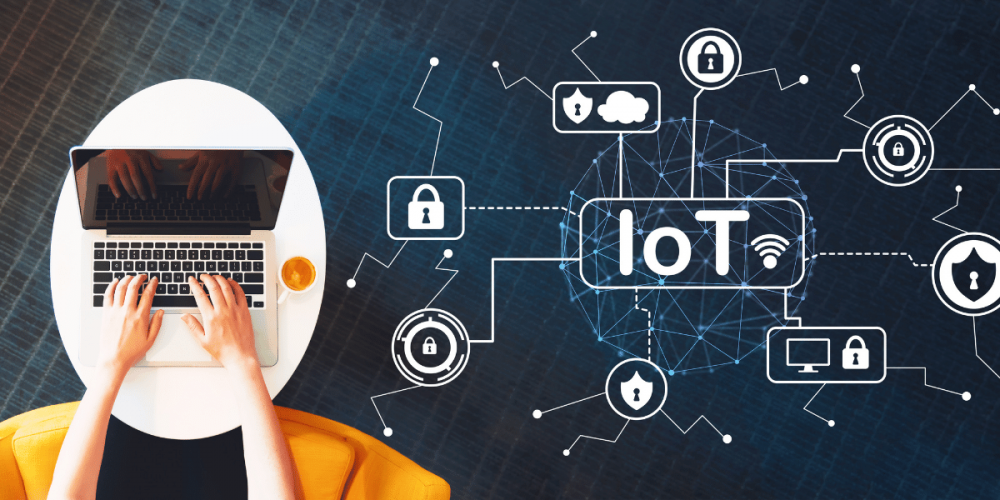The IoT is causing a shift in organizational processes by offering imaginative approaches to improve production and revenue, cut costs, and turn create new revenues. Having the capability to develop an IoT application is crucial for those businessmen who want to make use of this technology. This blog contains IoT development processes, major trends, and functionality reflecting several processes involved in developing a quite feasible IoT application.
IoT Market: Segments and Opportunities
IoT applications and devices are expected to continue to grow across a wide range of sectors, contributing to the market’s explosive growth.
- Supply chain management, predictive maintenance, and manufacturing processes are all improved by industrial IoT.
- Optimizing public safety, traffic control, and urban infrastructure in “smart cities.”
- IoT in healthcare: Transforming diagnosis, treatment protocols, and patient tracking.
- Smart home appliances, wearable technology, and linked cars to improve everyday living.
Top Functions of IoT Apps
For physical devices to transmit and receive data, they must be connected to the internet for IoT applications to work. These uses usually consist of:
Sensors and Devices: Gather information about the surroundings or carry out certain tasks.
Connectivity: Uses cellular, Wi-Fi, Bluetooth, or other protocols to provide communication between devices and cloud servers.
Processes data: Examines gathered information to provide useful information.
User Interface: The user interface, which is often accessed via a web or mobile app, enables users to interact with the system.
IoT Application Development Tech Stacks
Effective IoT development requires careful consideration of the technological stack. Common tech stacks consist of:
Raspberry Pi, Arduino, and ESP8266 are examples of hardware platforms.
Scripting languages: C/C++, JavaScript, and Python.
MQTT, HTTP/HTTPS, and CoAP are examples of communication protocols.
– Online services: Google Cloud IoT, Microsoft Azure IoT, and Amazon Web Services.
– Frameworks and Libraries: Angular, React, Flask, Node.js.
Developing an IoT Application in 9 Easy Steps
- Establish Goals:
Identify the problem that the IoT app will try to solve and the target users of the solutions developed. In particular, you will be expected to outline certain aims that will lay down the design and functionality of the app concerning the specific demands that you expect it to meet and the value that you expect the target audience to get from it.
- Study the market
Study the market to make sure that there is a need for such a product and what the competition is like. Use the State of the Art to enhance the concept of your app to stand out from competitors, gather data about current solutions, their strengths and weaknesses, and trends featuring users’ preferences.
- Select the Proper Hardware:
As per the data to be collected and the activities to be performed, select the sensors and devices. Consider the aspects in terms of accuracy, stability, and compatibility with applications to ensure proper and effective performance.
- Choose a Platform:
Decide on a cloud or edge computing platform that meets the processing, scalability, and data storage needs of your application. Android App Development Company examines choices according to attributes including IoT protocol compatibility, security features, and integration possibilities.
- Build a Prototype:
To evaluate the essential features of your app and get user input, start with a rudimentary version. iOS App Development Company essential functions and preliminary testing of data processing, user interfaces, and hardware integration should be possible with this prototype.
- Create the User Interface:
Create an interface that is easy to use so that using your app is made simpler. An intuitive user interface (UI/UX) should be the main focus to improve overall user happiness and experience by making it simple for users to browse, see data, and operate devices.
- Adopt Data Security:
To safeguard user data and guarantee privacy, include strong security measures. Make use of encryption, secure authentication, and frequent security upgrades to protect your IoT app from possible attacks and weaknesses.
- Extensive Testing:
To find and fix any problems, do comprehensive testing across a range of situations. IoT development guarantees that the program functions properly and dependably in actual usage, this involves evaluating hardware integration, data correctness, connection, and user interface operation.
- Implement and Track:
Start your application and keep an eye on its functionality and user reviews. Track use trends, spot problem areas, and implement the required modifications to improve functionality, fix problems, and adjust to changing user requirements by using analytics.
What Is the Cost of Developing an IoT App?
Several elements influence the cost of designing an IoT application. IoT app Development Company applications with minimal functionality are more expensive than complicated apps with sophisticated features.
Hardware:
Depending on the kind and quantity of devices used, costs may vary.
Development Team:
The amount spent overall is impacted by hiring skilled designers, developers, and testers.
Updating and Maintaining the app:
To keep it functioning properly, it needs regular support. Development of an IoT app may cost anywhere from $50,000 to $250,000 or more on average.
IoT Application Development’s Obstacles
There are numerous obstacles to overcome while creating IoT apps:
- Security:
With the growing susceptibility of connected devices, guaranteeing data security and privacy is critical.
- Interoperability:
It might be difficult to integrate several devices and protocols.
- Scalability:
Scalability is the capacity of the program to effectively manage an increasing number of users and devices.
To sum up
For companies looking to remain competitive and innovate, developing an IoT app is a huge opportunity. IoT development that promotes efficiency and growth may be effectively launched by company owners by knowing market trends, using the appropriate technology, and adhering to a disciplined development process. Mobile App Development Company helps in application development which is an investment worth making despite the difficulties.



